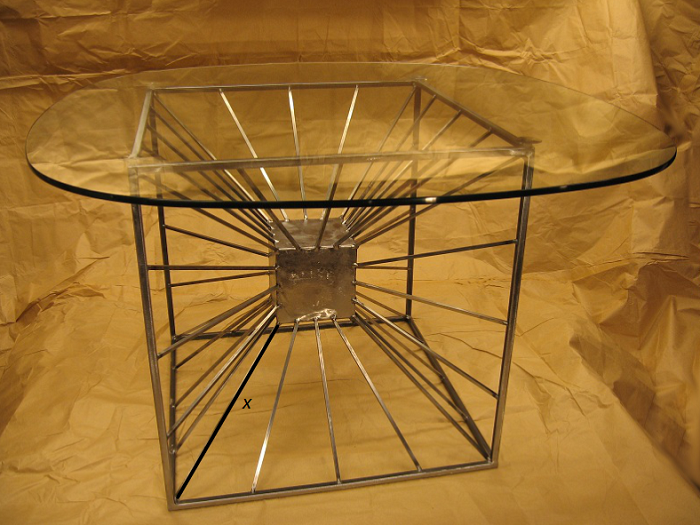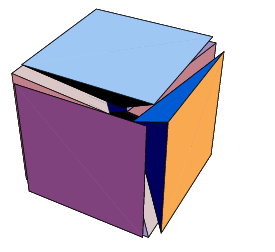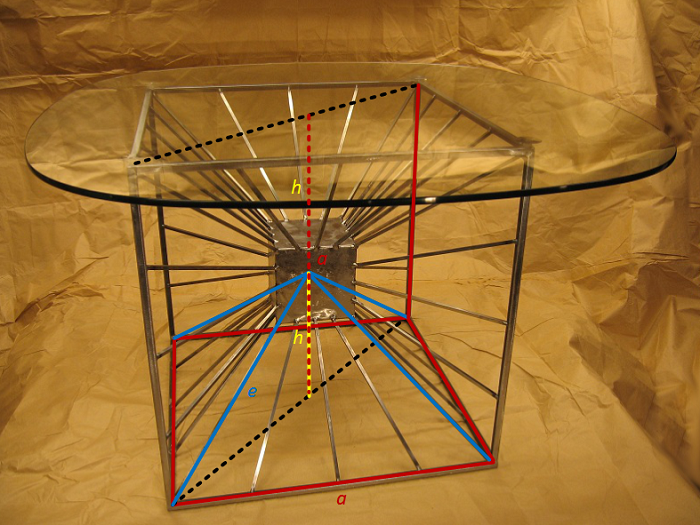In order to ease construction of the table, it was necessary to determine the value x, as shown:

One way to determine the value of x is to note that a cube can be dissected into 6 identical square pyramids:

Consider the following square pyramid with height h, side length a, and lateral edge length e:

The lateral edge length e is given by:
e = √(h2 + ½a2)
As can be seen from the prior image, h must be ½a (as shown by the vertical yellow and red dashed lines).
Substituting for h, we have:
e = √[(½a)2 + ½a2] = (½√3)a
This result can, of course, be applied to both the large outer and small inner cubes. We use subscript l to denote the large cube:
el = (½√3)al
And subscript s for the smaller inner cube:
es = (½√3)as
The distance x (see initial image) is then el - es as shown:

Substituting from above, we have:
x = el - es = (½√3)al - (½√3)as = (½√3)(al - as) ≈ 0.8660 · (al - as)
Since the dimensions of the outer and inner cubes are al = 24″ and as = 6″, we have x ≈ 15.89″ ≈ 39.6 cm.
Once these eight 39.6 cm lengths where welded in place, the other lengths were determined via direct measurement.

